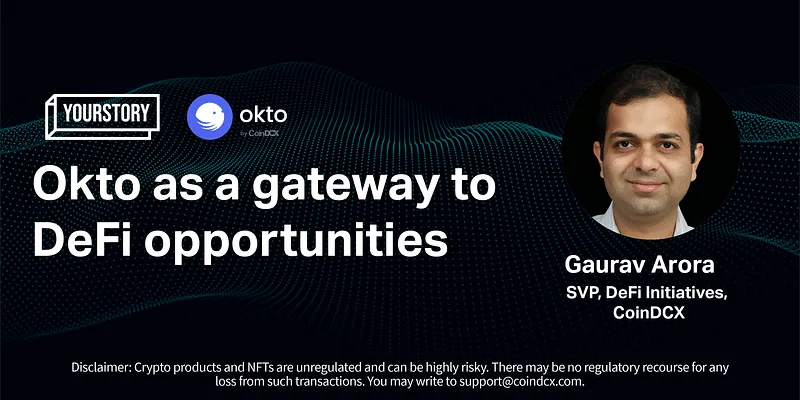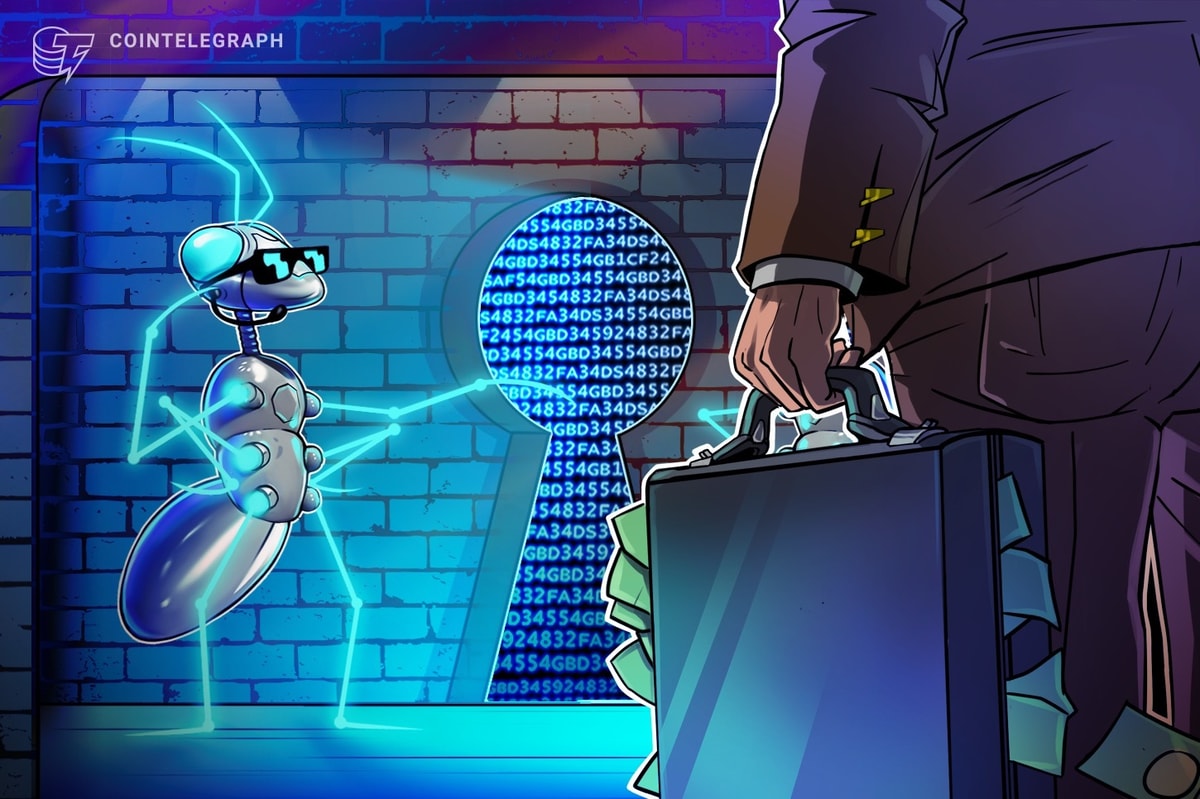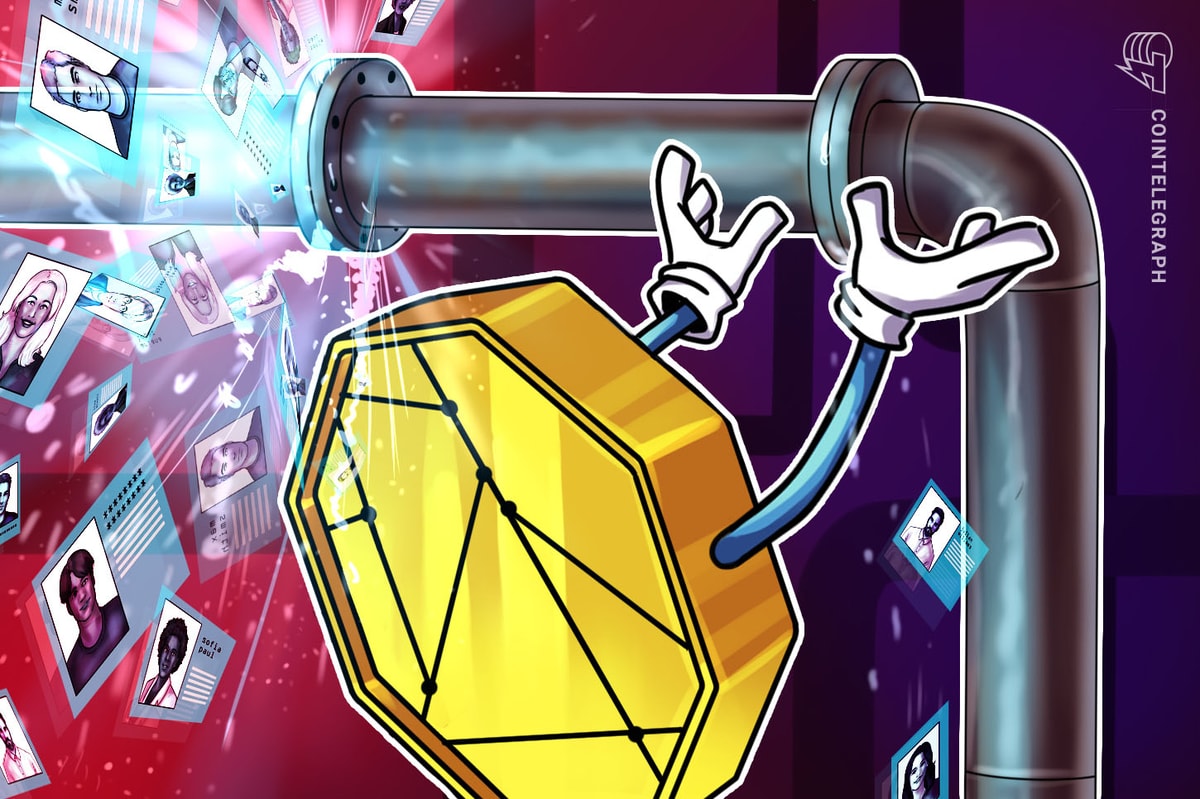The growing DeFi (Decentralised Finance) landscape in India is evident, with the country leading the world in terms of DeFi protocol adoption.
After the world’s fourth largest cryptocurrency exchange crashed early in November this year, user trust in crypto platforms has fallen. However, FTX was custodial — which means that the users were not able to access their assets as the centralised platform controlled the private keys — DeFi platforms offer a much safer trading option, with one of those being CoinDCX’s upcoming new mobile DeFi app Okto.
Speaking to Madanmohan Rao, Research Director, YourStory about the platform, Gaurav Arora, SVP, DeFi Initiatives at explained how users would be able to safely trade crypto tokens through the platform without worrying about safety, thanks to its transparency. Here’s what Gaurav had to say:
Madanmohan Rao: According to the 2022 Geography of Cryptocurrency report from Chainalysis, India ranks number four in overall crypto adoption and number one in DeFi protocol adoption. What do you think has accelerated this growth?
Gaurav Arora: India has always been ahead of the world when it comes to adopting technology. And with crypto assets we are witnessing the same. It is indeed heartening to see the crypto adoption increase. The awareness and appreciation that the investors have shown for the long term potential of the virtual digital asset (VDA) has been the primary contributor to the growing prominence in our national consciousness.
VDA is now featured prominently in investor portfolios, on the treasury books of multinational corporations, and amongst individuals as a means of payments and transactions.
There is no denying the role of VDA in India’s digital economy, but the question is around how we can turn all these attention into a positive force that can accelerate further growth in our country, and to harness it as a vanguard to grow our innovation economy.
Madan: How does India compare with the rest of the world in terms of mainstream adoption. Do you think now is the best time for Web3 and DeFi to go mainstream in India?
Gaurav: India can absolutely lead the Web3 and DeFi revolution. DeFi is the financial backbone of Web3. In the next decade, I have absolutely no doubt that DeFi will be monumental and will sweep across multiple facets of our digital businesses. But for that, the first step is to simplify and make it user friendly, which we have been working towards. Today, we have come a long way from the static Web1 to our current interactive Web2. Now, the quicker India can embrace Web3, the faster we can become a thriving Web3 ecosystem.
Web 3.0 truly has the potential to add over 1 trillion dollars to India’s GDP. We are building for mass adoption and in terms of demographics, internet penetration, and the ecosystem itself, this is the best time for venturing into this space. We expect this space to develop very rapidly over the next few years, with the potential to revolutionise India’s developmental progress and supercharge its economic growth.
Madan: Could you give us an insight into some of the challenges that investors and traders, for example, face when accessing and using DeFi protocols?
Gaurav: There are several roadblocks in this space. The first being that Web 3 use cases are dispersed throughout several chains, and consequently, potential investors and enthusiasts in the decentralised finance, or DeFi, area are usually unsure of the discovery process or starting point for Web3 and for DeFi prospects to carry out a transaction which brings forth the challenge of usability. It is incredibly difficult to access and use these different DeFi protocols. A user has to jump through multiple hoops, and have to understand concepts and intricacies of chains, protocols, and DApps where they get stuck while using various blockchains, which is also problematic. Another challenge being understanding the risks, which many users don’t understand how to evaluate. So risk, discovery, and usability — all of these things put together are creating bottlenecks from mainstreaming Defi.
Madan: How will users be able to leverage your app to maximise their DeFi portfolios?
Gaurav: We imagine this app to be completely hassle free. Users can simply log in and start investing without any trouble of learning cryptography and protocols or having to follow any complex steps. By solving this challenge, we will make DeFi completely user friendly. We wanted to build a simple DeFi mobile application which a customer can download where they don’t have to worry about seed phrases and keys while setting it up, understand chains and protocols, or look for applications to use. All they need is a one stop DeFi solution – Okto for all their DeFi investing needs; to earn interest, to buy a token across any of the chains available. We’re almost ready, we are doing a lot of alpha testing and we are hoping to get it in the hands of customers soon.
Madan: Okto offers traders the opportunity to access hundreds of DeFi protocols to help them earn by trading tokens and depositing idle funds to high yield generating pools. Tell us a bit more about the DeFi app ecosystem that users can expect through Okto.
Gaurav: We are starting off with the bigger use cases in the DeFi space. One of them is ‘trade’, which is the ability to buy tokens. There are thousands of tokens in the decentralised world, but only some of them are currently available for users. We want to give users the flexibility to buy any token which they want the moment it’s launched.
On the ‘earn’ side, there are opportunities that offer earning passive yield. So if a user has a token that’s lying idle, they can deposit it into a liquidity pool, into a farm, or into staking, and start earning interest. And these interests range from around 15-16 percent to 70-80 percent on some other tokens.
We’ll also bring in more use cases like tokenisation, maybe derivative protocols, and we will bring them natively on the user’s application. These protocols have been vetted and curated for the user so that they know these are safe protocols. And since we will bring them natively, the users don’t have to look for them on a browse, thus providing accessibility.
But the world of DeFi is evolving fast, and we want to make sure that the latest use cases come in and become widely accepted, so that users can access them at their fingertips.
Madan: Another big issue in this space also is security. How is Okto keeping users’ funds secure?
Gaurav: Self custody, which is most significant right now, is really powerful. When the user has control of his own funds, the funds cannot be kept in a pooled custody, they’re with the user’s personal address. But a user needs to have access to their key phrase, and if they lose it or somebody else gets access to it, they can lose all of their funds. So what people do is write it down, they key or the seed phrase or maybe keep it in a safe — and all this makes it . So we want to remove all of that complexity and make it easier for the users, but at the same time retain the power and the control that DeFi offers.
Hence we are leveraging a technology called MPC [multi-party computation] which is an added level of security. We’ve got multiple keys that are stored in the cloud, and none of them interact with each other, they’re never in one place. And all of them individually need to be signed for the user to be able to access and control their funds. Even if a user loses the key, nobody can take their money. We have given the same security of self custody, but with a much easier and safer user interface. We have made the steps much easier like signing for the transaction, it’s the multiple clicks and steps we’ve eliminated while giving them the same security.
Madan: One of the major concerns traders and investors have with DeFi is regulation, or the lack of it in some cases, leading to security concerns. How does Okto’s security layers assuage those concerns?
Gaurav: One of the things that’s holding back users from accessing this, is the lack of regulation. The importance of regulations is pertinent. Regulations bring trust for the user and eliminate the bad actors. There are many bad actors who can freely operate in the present scenario, because there’s really no law of the land holding them back. Secondly, the regulations will allow inflow of value, which is there in external markets. The DeFi world is worth only a few hundred billion dollars, while the outside world is worth trillions of dollars. So the value of the outside world connected with the technological power of the DeFi world will make this ecosystem explode. And that connection can only happen if regulations come into place.
And it’s not just Okto, the decentralised finance space overall will help build user trust. To think about it from a regulator’s point of view, their most important worry is how they can audit their regulation. If I want people to do something, how do I make sure it’s done in the right way? If a regulator says people have to follow rule A, B, and C, a decentralised finance protocol cannot do anything but follow rule A, B, and C because it’s coded into the protocol, additionally, the reports are available live and publicly accessible. The regulators can check at a click of a button to see if the rules are being followed. Through these measures,
Madan: More than a lakh people have signed up to be on the waitlist for Okto. How would you describe the response from the community so far to the app?
Gaurav: It’s really exciting. It puts the pressure right back on us knowing that there are so many customers queued up, and that we need to deliver up to their expectations.
With the current events with FTX and some of the other debacles in the centralised space, it has further accelerated the demand for this product. This waitlist happened three months ago when we launched Okto during Unfold 2022, and now self custody has become topical conversation. People are realising the value of being more in control of your own funds, of moving to self custody, and demanding more from their exchanges and other centralised systems.
Madan: In the wake of these recent global developments we just discussed, what are the steps taken by CoinDCX to emulate transparency?
Gaurav: Our Co-founder and CEO, Sumit Gupta, has been talking about the steps taken to be there for the community. He’s been a big proponent of transparency. Since the beginning, we’ve been transparent and compliant. Recently, in continuation of our efforts to make the proof of reserves public, CoinDCX further strengthened the trust and transparency amongst its users by publishing its full proof of reserves with an audited report. The report furnishes both sides of its reserve balance i.e. assets and liabilities and has been published in partnership with Coingabbar a crypto research firm. Further, the balance has been duly certified by the statutory auditor, SGCO &Co. LLP, Chartered Accountants as per the format prescribed by the Institute of Chartered Accountant of India.
Madan: Thanks Gaurav! This has been a terrific conversation. I think three key takeaways for our audience would be the three Ts: technology, trust, and traction. The technology pieces are there, trust is definitely picking up, and with that we shall see much more traction in this space.
Read More: news.google.com









 Bitcoin
Bitcoin  Ethereum
Ethereum  Tether
Tether  XRP
XRP  Solana
Solana  USDC
USDC  Dogecoin
Dogecoin  Cardano
Cardano  TRON
TRON  Lido Staked Ether
Lido Staked Ether  Wrapped Bitcoin
Wrapped Bitcoin  Sui
Sui  Wrapped stETH
Wrapped stETH  Chainlink
Chainlink  Avalanche
Avalanche  Stellar
Stellar  Hyperliquid
Hyperliquid  Shiba Inu
Shiba Inu  Hedera
Hedera  LEO Token
LEO Token  Bitcoin Cash
Bitcoin Cash  Toncoin
Toncoin  USDS
USDS  Litecoin
Litecoin  Polkadot
Polkadot  WETH
WETH  Monero
Monero  Binance Bridged USDT (BNB Smart Chain)
Binance Bridged USDT (BNB Smart Chain)  Wrapped eETH
Wrapped eETH  Bitget Token
Bitget Token  Pepe
Pepe  Pi Network
Pi Network  Ethena USDe
Ethena USDe  Coinbase Wrapped BTC
Coinbase Wrapped BTC  WhiteBIT Coin
WhiteBIT Coin  Aave
Aave  Bittensor
Bittensor  Dai
Dai  Uniswap
Uniswap  NEAR Protocol
NEAR Protocol  Aptos
Aptos  OKB
OKB  Jito Staked SOL
Jito Staked SOL  Ondo
Ondo  Tokenize Xchange
Tokenize Xchange  BlackRock USD Institutional Digital Liquidity Fund
BlackRock USD Institutional Digital Liquidity Fund  Cronos
Cronos  Ethereum Classic
Ethereum Classic